Story
Around 1996 I bought a computer with an AMD 5x86-P75 processor. 5x86 was a marketing name for the last 486 generation: 486DX4-133 (33MHz bus and 133MHz core clock, 16kBytes 1st level cache).
The first 586 processors were already available at the this time but they had some problems (speed, calculation error).
Was it a good decision from me still to buy a 486?
486 starting point / reference
I own a Shuttle HOT-433 with UMC UM8881F chipset which has a high reputation in the retro-computer scene. I double-checked its status with a remeasurement on a very common Lucky Star SiS 496 board.
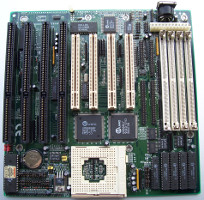

As processors I have the AMD 5x86-P75 and the Cyrix 5x86-100GP in my stock.
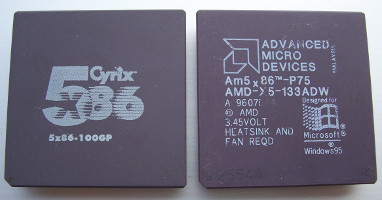
After some measurements I decided me for the AMD 5x86-P75 on the Shuttle HOT-433 as reference because:
- AMD has app. 25% more integer performance than Cyrix.
- The Cyrix processor has a higher floating point performance but the integer calculation power is more important for me.
- The Shuttle HOT-433 shows app. 25% higher memory and 10% higher cache throughput than the SiS board.
I can't measure any differences on the IDE interfaces of both boards because NetBSD doesn't support the bus-master DMA controller of the UMC UM8881F chipset.
All measurement results are documented here.
The 586 environment
I used 256kB cache and 32MB 72pins fast page memory modules at the 486 motherboards. For a fair comparison I looked for a similar socket 7 motherboard in my stock and found two pieces:
- NMC-5VxA - produced by EpoX with the original name "P55-KV". This board has a (fast) VIA VT82C585VPX / VT82C586A chipset.
- PcChips M558 - here I can select 256kB cache with a jumper. The board has an UTron UT85C501 chipset without IDE DMA controller.
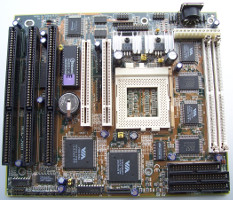

Why did I measure with a slow board also? Because I was interested in how many CPU power it takes...
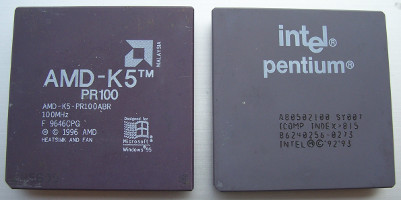
My earliest 586's are an AMD K5 and an Intel Pentium P54C with 100MHz. Both processors have an fixed internal bus clock multiplier of 1.5. With the bus clock selection I try to emulate the following processors:
| bus clock | core clock | it emulates |
| 50MHz | 75MHz | K5-PR75 |
| 60MHz | 90MHz | K5-PR90 |
| 66MHz | 100MHz | this is the native speed |
Measurement results
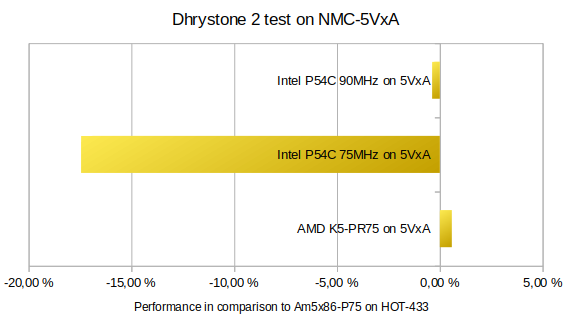
An AMD K5-PR75 has the same integer performance as the last AMD 486 (Am5x86-P75). The Intel processor needs 90MHz for the same result.
To get the same picture on a slow motherboard we need the next CPU speed rate (90MHz for AMD, 100MHz for Intel):
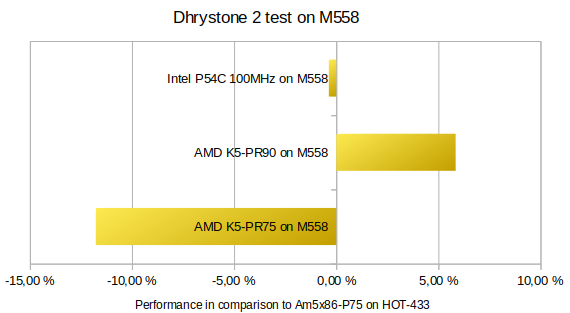
The Intel processor has a very strong floating point unit:
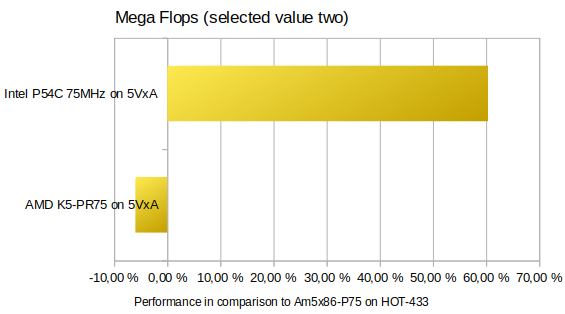
On the M558 we need again the next processor level to have the same performance as the Shuttle HOT-433:
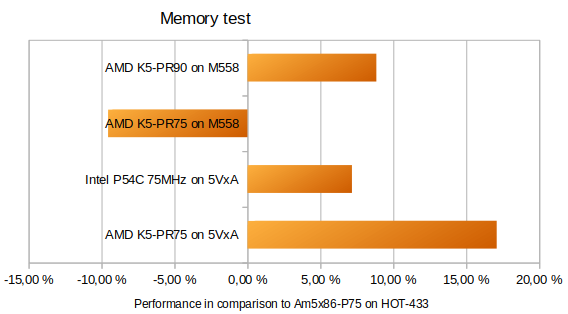
The VIA chipset on the 5VxA board supports UltaDMA-33 mode for the IDE hard drives - this was a good innovation and a huge performance boost:
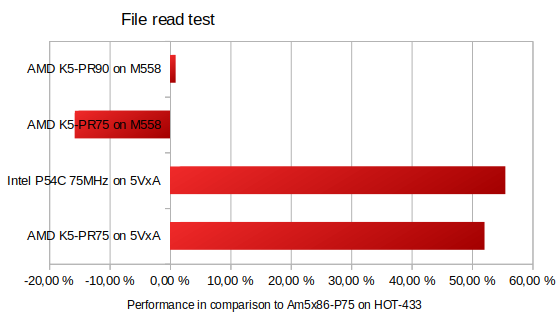
Without UDMA mode (PcChips M558) we need at least a 90MHz CPU to hits the 486 motherboard...
Summery
- The high integer performance of the AMD K5 processor surprises me, especially because this CPU is often depicts a little negatively.
- The lower integer performance of the Intel CPU surprises me also.
- Intel took the lead in the processing power of floating point numbers at this time.
- The fastest processor is useless without a good motherboard...
Last but not least I would say: no, it wasn't a mistake to purchase a good 486 system instead of an early 586 computer.
falk.richter*at*yandex.com
Last update: February 17, 2020